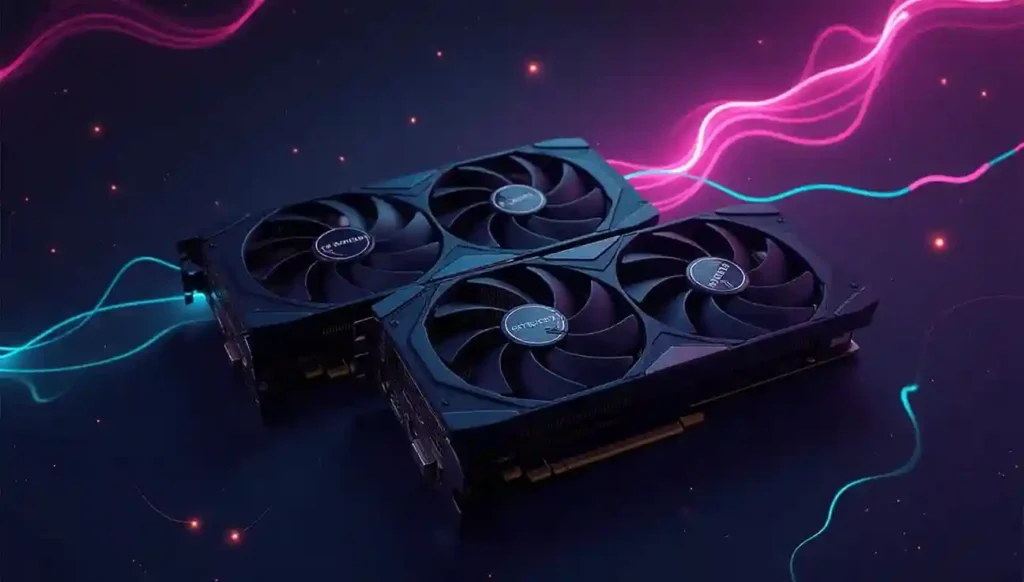AMD Radeon RX 7600 Series Put to the Test: Why More VRAM Matters for Modern Gaming
A recent graphics card performance analysis by PC Games Hardware has provided valuable insights into the AMD Radeon RX 7600 series, specifically comparing the RX 7600 graphics card and RX 7600 XT graphics cards models. Since both GPUs share the same core architecture and GPU count but differ in VRAM capacity, this test served as an ideal benchmark to evaluate how memory size influences gaming performance.
Key Takeaway: More VRAM, Better Performance
The results from the test were unambiguous—the 16 GB RX 7600 XT graphics card significantly outperforms its 8 GB counterpart, especially in demanding tasks like ray tracing. The additional memory allows for:
- Smoother Gameplay: Reduced stuttering and better frame rates.
- Texture Quality Preservation: Avoids texture degradation commonly seen with lower VRAM cards.
- Reduced Memory Warnings: Fewer pop-ups for VRAM capacity issues.
- Higher Detail Retention: Prevents automatic downgrades in visual fidelity when VRAM limits are exceeded.
Modern games, particularly those featuring advanced ray tracing and high-resolution textures, are becoming increasingly VRAM-intensive, making the difference between 8 GB and 16 GB significant for both performance stability and visual quality.
Is 8 GB Still Enough in 2025?
PC Games Hardware clearly advises against purchasing an 8 GB graphics card for gaming in 2025. While such cards can still handle older titles or lower-demand setups, they are prone to performance issues with newer, graphically intensive releases. Even lowering in-game settings may not prevent frame drops or visual downgrades due to insufficient memory.
For a future-proof gaming experience, the recommendation is to invest in GPUs with at least 12 GB of VRAM.

Best Value Pick: Radeon RX 7600 XT with 16 GB
The Radeon RX 7600 XT (16 GB) has emerged as an exceptional mid-range choice for gamers seeking strong performance without compromising visual fidelity. The card balances price and power effectively, delivering high-quality gameplay even in demanding titles.
Positive Industry Shift Toward Higher VRAM Capacities
The good news is that most graphics cards released since December 2024 have embraced larger memory configurations:
- Intel Arc B580: Launched with 12 GB of VRAM.
- Intel Arc B570: Features 10 GB of VRAM.
- AMD Radeon RX 9070: Confirmed to launch with 16 GB of memory.
This industry trend reflects a growing acknowledgment that higher VRAM is essential for modern gaming demands, especially with the rise of 4K gaming and advanced graphical effects like ray tracing and path tracing.
The Uncertainty Around the RX 9060 Series
A lingering question revolves around the Radeon RX 9060 series, teased by AMD during CES 2025. While its memory capacity remains unconfirmed, reports suggest some 2025 models may still ship with 8 GB VRAM, including models like the RTX 5050 Laptop GPU.
This decision could limit the RX 9060’s ability to handle next-gen gaming workloads effectively, especially compared to its 12 GB and 16 GB counterparts.
Final Verdict: Prioritize VRAM for Future-Proof Gaming
The findings from PC Games Hardware make one thing clear: 8 GB of VRAM is becoming increasingly obsolete for modern gaming experiences. As titles continue to demand higher memory capacities, investing in a 12 GB or 16 GB GPU is a smarter choice for gamers looking to stay ahead.
The Radeon RX 7600 XT (16 GB) stands out as a high-performance, budget-friendly option for 2025, making it an excellent pick for those seeking both quality visuals and stable gameplay.


